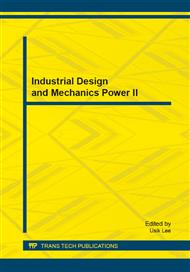p.3
p.8
p.13
p.18
p.22
p.27
p.32
p.36
Mechanical Analysis of a Cowcatcher for a High-Speed Train in Crashing
Abstract:
A finite element model of a cowcatcher mounted at the front of a high-speed train is established and the processes when the head car crashes a rigid wall or an obstacle at different speeds are simulated by using ANSYS/LS-DYNA software. The results show that with the cowcatcher the passenger deceleration would decrease and the kinetic energy can be absorbed more quickly when the head car crashes a rigid wall. When a train crashes an obstacle on the track at a low speed, say 10m/s, the obstacle is turned up, which may destroy upper structures of the train. When the speed is high, say 50m/s, the obstacle will crash into the cowcatcher and the kinetic energy of the train will be absorbed by the front part of the cowcatcher.
Info:
Periodical:
Pages:
18-21
Citation:
Online since:
October 2013
Authors:
Price:
Сopyright:
© 2013 Trans Tech Publications Ltd. All Rights Reserved
Share:
Citation:


